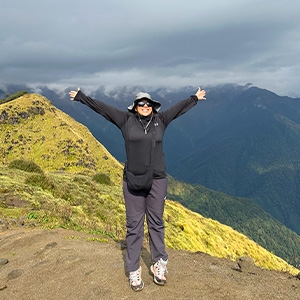The majority of us have the misconception that the only times of year to go trekking in Nepal are in the spring and fall season. Therefore, when autumn draws to a close, we imagine wistfully about the springtime exploits of the following year without giving the winter season any regard. It is true that Nepal considers the winter to be the off-season for travel, especially for activities involving the mountains like trekking.
However, there are several treks in Nepal that can be most enjoyable from December through February during the winter. Without a doubt, Nepal has the greatest potential for trekking. When December hits, it transforms into a winter paradise. Trekking in Nepal in December is another beautiful season that will make your journey more memorable. Due to its specific benefits, people who enjoy trekking can have a great trip experience in the months of December, January, and February. The setting is uncrowded, the views are unpredictable, and the weather is perfect. Whether they are experienced or fearless, trekkers can enjoy themselves to the fullest. Trekking below 4000 meters seems safer and more comfortable, while trekking at higher elevations isn't really a good idea during winter because of all the snow. All year long, Nepal provides a variety of opportunities; all you have to do is choose the right destination and make the necessary preparations. While some people crave the potential of winter treks in Nepal, others might not consider them to be their typical vacation. Winter is notorious for being cold, dark, and miserable, so it's understandable if you'd rather stay inside. In reality, for those who went trekking in the winter, the Himalayan region of Nepal transformed into a winter wonderland. Nepal never fails to delight tourists with its splendor and the numerous trekking routes that are accessible.
Nepal offers thrilling and rewarding trekking. Trekkers are always drawn to the Himalayas or other snowy mountains, and the warm Nepalese hospitality is truly exceptional and has a long-lasting effect on travelers. While trekking in Nepal during the winter, wearing full hiking boots, including a jacket and pants, and snow gaiters is highly advised. Pick your ideal location and get to work on your plan right away! You can explore with a little more space now that the autumn crowds are gone and you'll have the Himalayas to yourself. Compared to other times of the year, you may experience the trip more fully. Your thirst for adventure will be satisfied by the glaring sun, the brisk air, the partially to completely frozen falling waterfalls, the recently covered mountains, and the wild, unusual, and trail-worthy trails in winter. Why wait until next year when you can travel now and save money on your flights, lodging, meals, and entire package while also having the beautiful trails, scenery, and Himalayas all to yourself?
Here is a list of the best winter treks in Nepal that will take you on real adventures and show you a lot of the country's beautiful Himalayan and mountainous landscapes, historical sites, colorful cultures, and delicious food.
Everest View Trek
Winter trekking to Everest Base Camp is challenging but not impossible. As you move closer to base camp, there is a greater possibility that the trail will become obstructed during winter. As a result, the Everest View Trek is an excellent option for those who would like to view Everest in the winter. Everest Panorama Trek is another name for this particular hike in the Everest region. The name of this mountain range in Nepal's Khumbu Himalaya gives the impression that you would have breathtaking views of Mount Everest (8848 m) and the other tallest mountains in the region. this trek cam be easily acessible with very low fitness level as well.
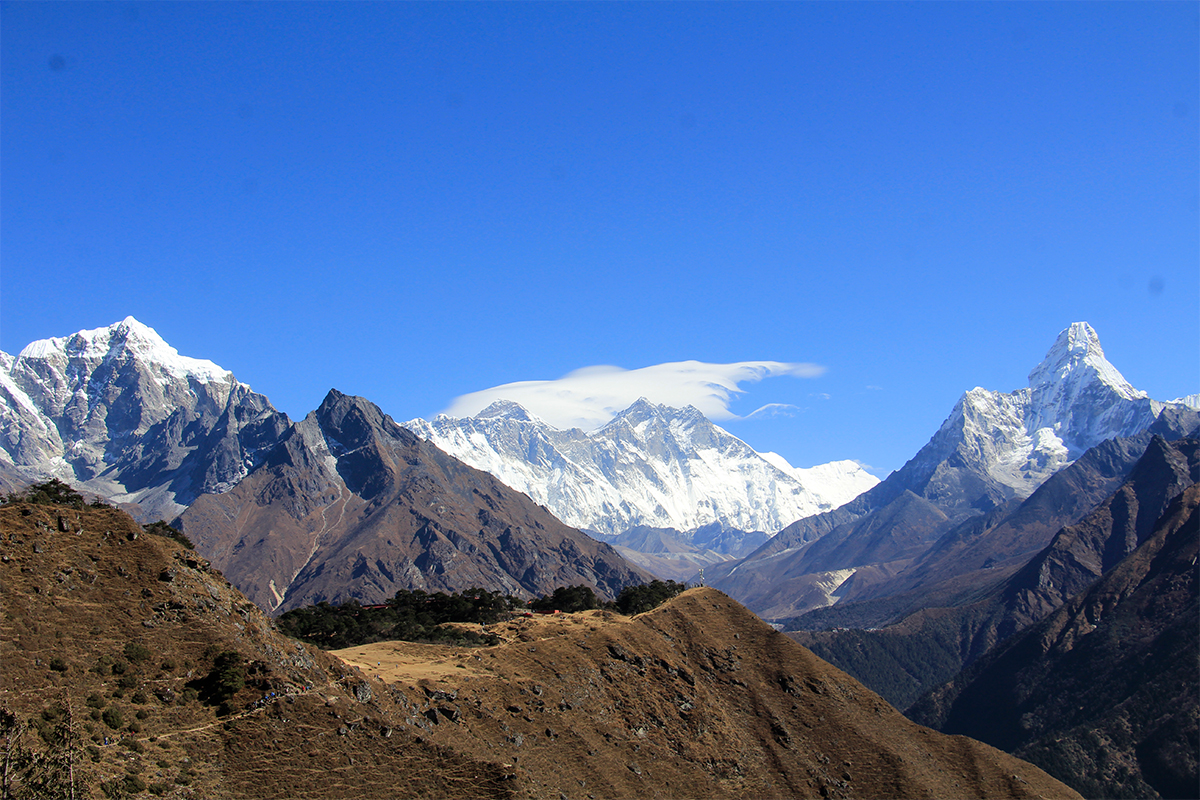
Everest View Trek is a hike that is suitable for people of all ages and abilities, and it allows you to explore the breathtaking Khumbu region, as well as a range of various landscapes, Sherpa settlements, and the people, as well as their culture and way of life and daily activity. During the winter, there are a number of really stunning vantage spots in the Khumbu region that provide views of the Himalayan ranges, including Mount Everest, Ama Dablam, Nuptse, and Lhotse, as well as many other peaks.
During the winter months, the temperature in the region surrounding the Everest View Trek can reach as low as -5 degrees Celsius and as high as -7 degrees Celsius, with the peak temperature rarely rising above the range of 6 to 10 degrees Celsius.
Highlights of Everest View Trek
- Dramatic and gorgeous flight to Lukla Airport- the most dangerous airport in the world.
- The exploration of breathtaking landscapes, rivers, and valleys.
- Exploring Namche Bazaar, the renowned tourist marketplace and sherpa center of the Everest region.
- Exploring the Everest viewpoint and taking in the spectacular view of the tallest mountains in the world, including Ama Dablam, Lhotse, and Mount Everest.
- Exploring the Everest View Hotel at an elevation of 3,880 meters.
- Visit the village of Khumjung to learn about Sherpa customs, festivals, and culture.
- Learn about the unique flora and fauna of the Himalayas in the areas around Namche, Phakding, and Manjo.
Pikey Peak Trek
The Pikey Peak Trek is a route that leads trekkers to the southern regions of the Solu-Khumbu region, which are located in close proximity to the Everest region. This trek is quieter than busier routes, even during peak seasons (autumn and spring) and is considered one of the best trek in Nepal. The path, which goes through a few different Sherpa communities, provides hikers with the opportunity to witness genuine Sherpa culture in action.
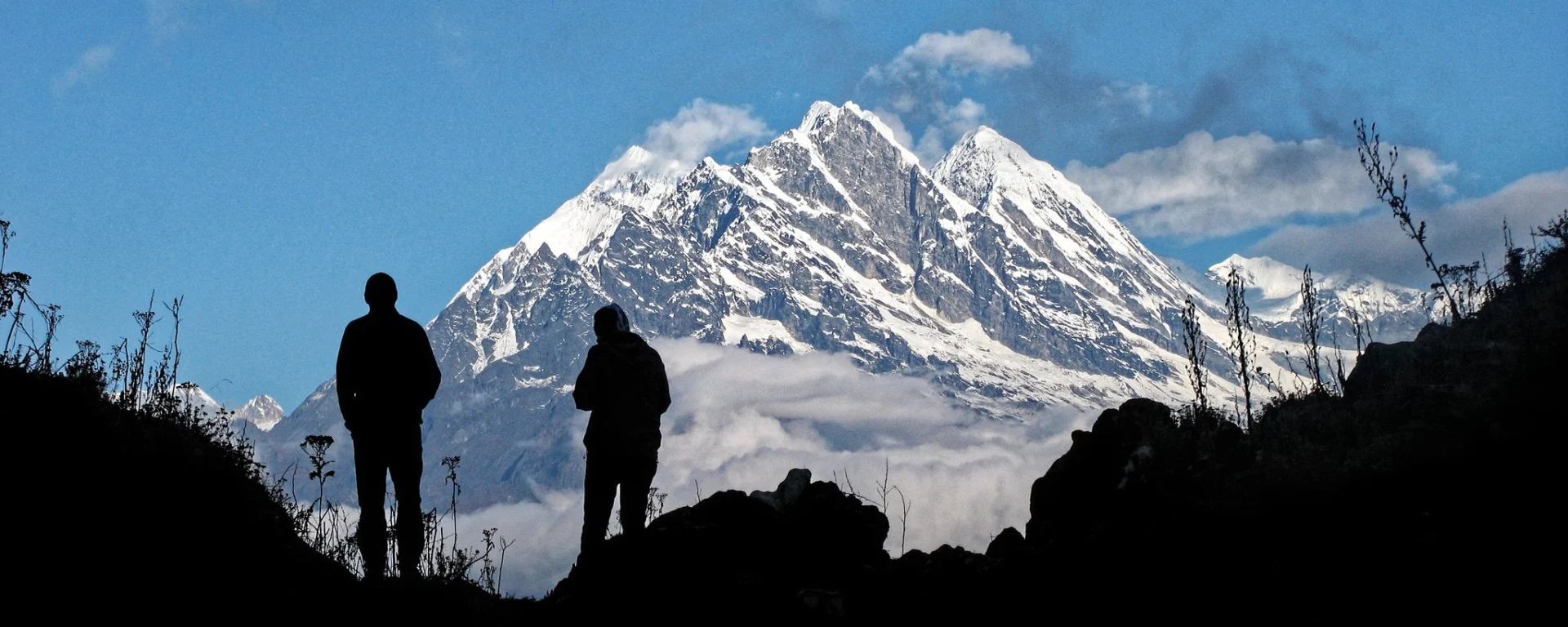
In addition, the view from the summit of Pikey Peak, which is located at an altitude of 4,000 meters, is comparable to very few others. Everest, Lhotse, Gaurishanker, Makalu, and Dorje Lakpa are some of the mountains that can be seen in the panorama. A spectacular panorama of the Himalayas may be seen from Pikey Peak throughout the months of December, January, and February. This hike will take a total of nine days to complete and will cover a distance of around 55 kilometers from the beginning to the end. The typical time spent walking each day is five hours. Because the Pikey Peak track is not as popular as other routes, those who take it will have a better opportunity to observe Sherpa culture up close. You will be able to see many of the world's tallest mountains, such as Mount Everest (8,848 meters), Makalu (8,463 meters), and Lhotse (8,516 meters), amongst many more. Even though there is a lot of snow in the winter, the trek is definitely worth it to experience the beautiful views of the Nepal Himalayas. Not only will you get to see the breathtaking mountain landscape, but you will also get to see the magnificent golden sunrise and sunset vistas while you are on your tour. Over the summit, it is unusual to discover a route in Everest Khumbu that is so straightforward to experience.
The temperature surrounding Pikey Peak drops to a low of between -2 degrees Celsius and -6 degrees Celsius during the winter, while the high never rises above the range of 6 to 10 degrees Celsius. There are times during the winter when Pikey Peak is blanketed with snow.
Highlights of the Pikey Peak Trek
- Scenic and dramatic flight from Kathmandu to Luka Airport.
- Breathtaking views of mountains, hills, and magical landscapes.
- Experience the culture and lifestyle of the Sherpa people.
- Hiking through the alpine forest of Sagarmatha National Park and exploring the lives of rare flora and fauna
- One of the best views of Mount Everest is from Pikey Peak.
Mardi Himal Trek
The Mardi Himal Trek is an off-the-beaten-path trek that was only recently discovered in Nepal and is one of the best winter treks in Nepal. Your journey will take you to the foothills of the Mardi Himal, which are directly beneath the Machhapuchhre (fishtail) Mountain. The Mardi Himal Trail is a well-kept secret in the Annapurna region. It is east of the Annapurna Base Camp and is a great place to take pictures of Mardi Himal, Machhapuchhre, Annapurna South, and Hiunchuli, among other tall mountains in the area.
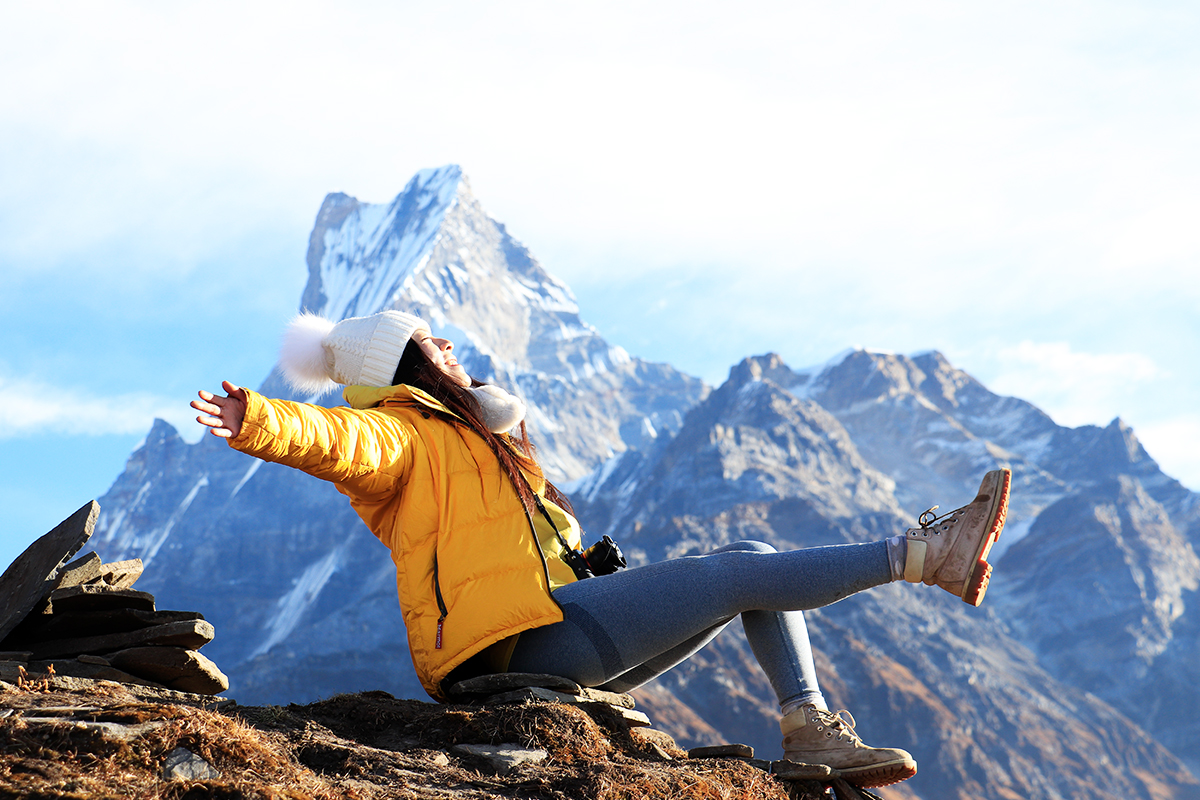
The Mardi Himal Trip, despite the fact that it is an off-the-beaten-path trek, is a reasonably moderate-level trekking adventure that can be accomplished at any time of the year by trekkers of any experience level, including beginners. The hike is gorgeous at any time of year, but in the winter, when there is fresh snow on the pinnacles and in the oak and rhododendron woodlands, it is especially breathtaking. Trekking in Nepal in December is always pleasing. Your heart will race with excitement when you observe fast-running rivers, iron or even bamboo-clad bridges, and a straightforward way of living. Because there will be very few other people there, the area that is covered in snow and is white will be all yours. As a result, it is one of the best treks in Nepal to undertake during the wintertime.
In December, there is typically only one day that experiences rain or snow. The Mardi Himal Base Camp is the highest point on the trek. It is 4,500 meters above sea level. At the Mardi Himal Base Camp, you can expect daily highs of approximately 1.4 °C (35 °F) and daily lows of -14.6 °C (6 degrees Fahrenheit) in the month of December.
Highlights of Mardi Himal Trek
- Trekking along the lively and less crowded trail gives breathtaking views of mountains, woods, valleys, and other landscapes.
- You will have the opportunity to explore magnificent mountains like the Dhaulagiri, Fishtail, Hiunchuli, and Annapurna range.
- Trekking through an authentically beautiful natural setting that includes a lush, green jungle and a quaint mountain settlement.
- Visit the traditional villages, learn about the culture, and enjoy the friendly welcome of the locals.
- From the Mardi High Camp, located above snow-capped peaks, witness the sunset and sunrise.
- The Mardi Viewpoint will provide you a chance to see the Pokhara valley.
- After trekking, explore Pokhara and the lakeside.
Manang Valley Trek
Manang is a beautiful valley that is wrapped in mystery by the surrounding mountains, hills, and ridges. In the Manang area of Nepal, you'll find the picturesque little town of Manang. This region always make it's place in top 10 trekking places in Nepal. The Manang journey will lead you to this stunning valley by way of its small communities, abundant natural beauty, and breathtaking views of the mountains all around you.
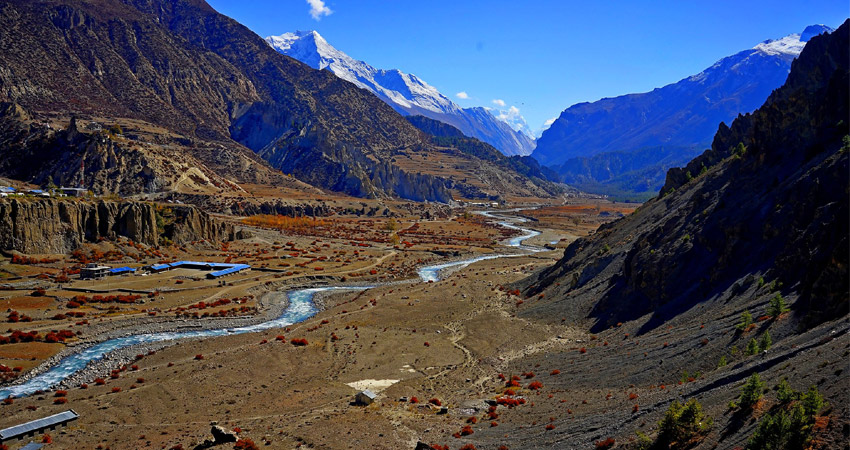
The village of Manang may be found in the Marshyangdi River's expansive valley, which is located to the north of the Annapurna Mountain Range. It is possible to reach Muktinath and the valley of the Gandaki river by traveling through the Thorong La pass, which is located in the north-west and has an elevation of 5,416 meters. Acclimatization is something that trekkers who are going to be traveling throughout the Annapurna range should do in Manang before continuing on to areas with a greater elevation. During winter, the average duration of time that the sky is clear or sunny (partly cloudy or less) in Manang is 20.6 hours (86% of the day). In Manang, December has an average of 20.6 hours per day of bright, sunny weather, while August has the fewest hours without clouds, averaging only 5.0 hours per day. Based on historical data, this graph depicts the typical quantity of sunshine in Manang in December. On a normal day in December, Manang has temperatures ranging from a high of 38°F (-4°C) to a low of 17°F (-9°C). Some could describe it as both cozy and icy cold. This is the reason why this region is regarded as the best winter treks in Nepal.
Highlights of Manang Valley Trek
- Tilicho Lake at an elevation of 4919 meters (16138 feet) is the highest lake in the world.
- Explore Nepal's most remote community, the Khangsar village, and its many ancient Buddhist monasteries along the paths.
- Mountainous terrain, bumpy roads, and a Jeep ride
- With her range, she had a view of both Manaslu (8163 m) and Mt. Annapurna (8019 m).
- A view of the Chongkor View Point and the Gangapurna Glacier from Manang Valley (3540m)
- Spend the day at Kicho Lake and pay a visit to Bodzo Gompa.
Poon Hill Ghorepani Trek
One of the best-known and well-loved of Nepal's short treks is the Poon Hill Ghorepani Trek. Poon Hill, which is located in the Annapurna region and has an elevation of 3,210 meters, is a well-known lookout point that provides breathtaking views of the Annapurna and Dhaulagiri ranges, and panorama of the Himalayas during sunrise and sunset. The path, which is characterized by steep ascents and descents, travels for the most part through thick forests that are predominated by rhododendrons and bamboo, and it also goes through terraced farms that are located near communities that are mostly inhabited by Gurungs. In comparison to the busy seasons of autumn and spring, this route during a Ghorepani Poon-hill Trek in the winter months of December and January is far less crowded. The hiking trail, which is approximately 50 kilometers long from the trailhead to the destination, necessitates walking for three quarters of a day. On a daily basis, you will walk for an average of about six hours.
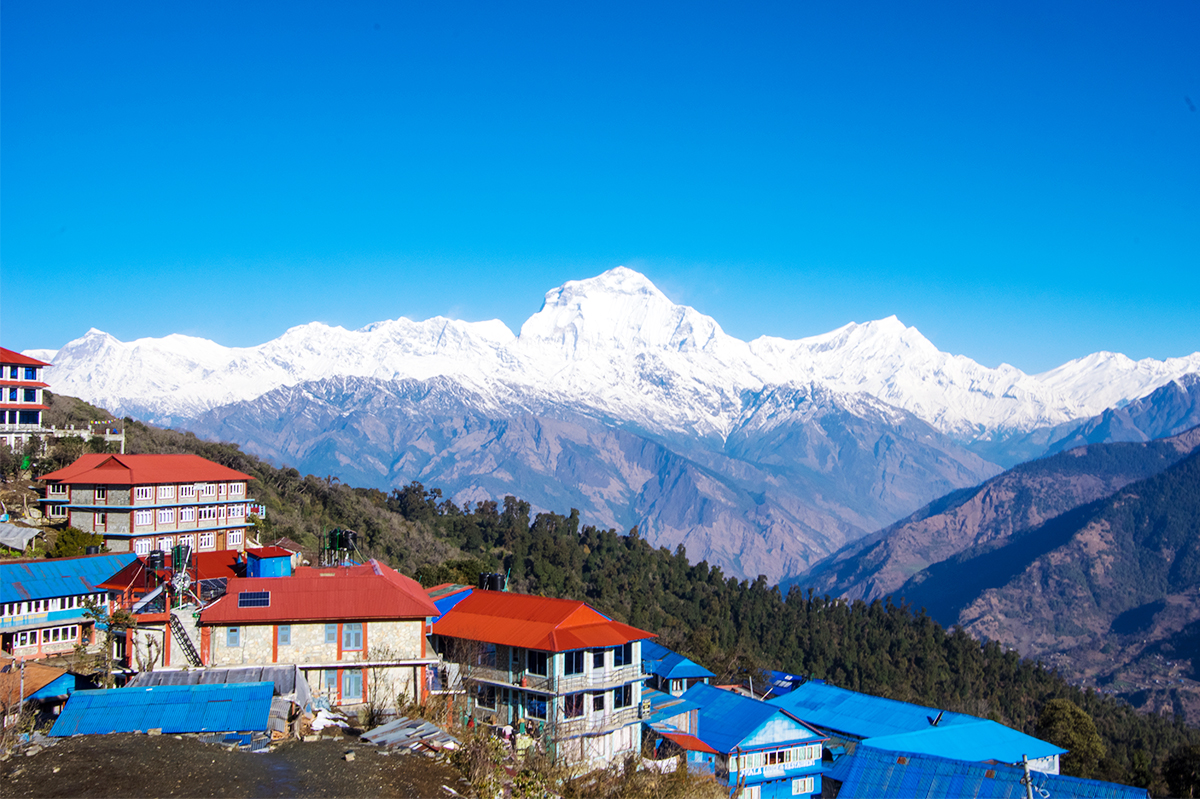
In the winter, the minimum temperatures drop to between -2 degrees Celsius and -6 degrees Celsius at Ghorepani and Poon Hill, while the highest temperatures remain between 7 degrees Celsius and 10 degrees Celsius. During the winter months, the region may on occasion receive snowfall. Ghandruk in december is a must-visit season to experience beautiful winter trek.
Highlights of Poon Hill Ghorepani Trek
- Beautiful morning views of the Annapurna Sanctuary's mighty mountain peaks.
- dense woodland of magnolias and rhododendrons
- a fantastic chance to see some endangered mountain wildlife, like the Brown Dipper, White-breasted Kingfisher, butterflies, and Barking Deer.
- The world-famous troops known as "Gorkhas" are from the lovely and endearing villages of Ulleri, Ghorepani, and Ghandruk.
- Beautiful sunrise and a sweeping vista of the mountains from Poonhill.
- Discover the opulent hospitality in Pokhara while admiring the natural beauty.
- Views of some of the world's highest mountains, including Mt. Dhaulagiri, Mt. Annapurna I, II, III, Mt. Machhapuchhre, Nilgiri, Lamjung Himal, Hiuchuli, and many more.
Rara Lake Trek
Rara Lake in Nepal is one of these unique, majestic, and spectacular lakes. Rara Lake is the largest and deepest freshwater lake in Nepal that is free-standing and located in the Himalayas. In the farthest northwestern corner of Nepal, between the districts of Jumla and Mugu, you'll find this location.
Visits to the lake are made by thousands of people from different countries all over the world each year. The months of early winter and spring are when tourists go to Rara in the greatest numbers. It is a great location for trekking due to its peaceful setting, which includes being surrounded by hills and mountains as well as Rara National Park. The charm of Rara Lake is complemented even further by the sight of snow-capped mountains in the Himalayas. The remote northwest region of Nepal is the starting point for this captivating trip to Lake Rara. The journey into the wilderness starts in the buzzing capital city and ends in the isolated settlement of Jumla. After being uprooted, you will make your way through the intriguing settlements of Gorusingha, Sija, and Jaljala before arriving at the tranquil heaven that is Rara Lake.
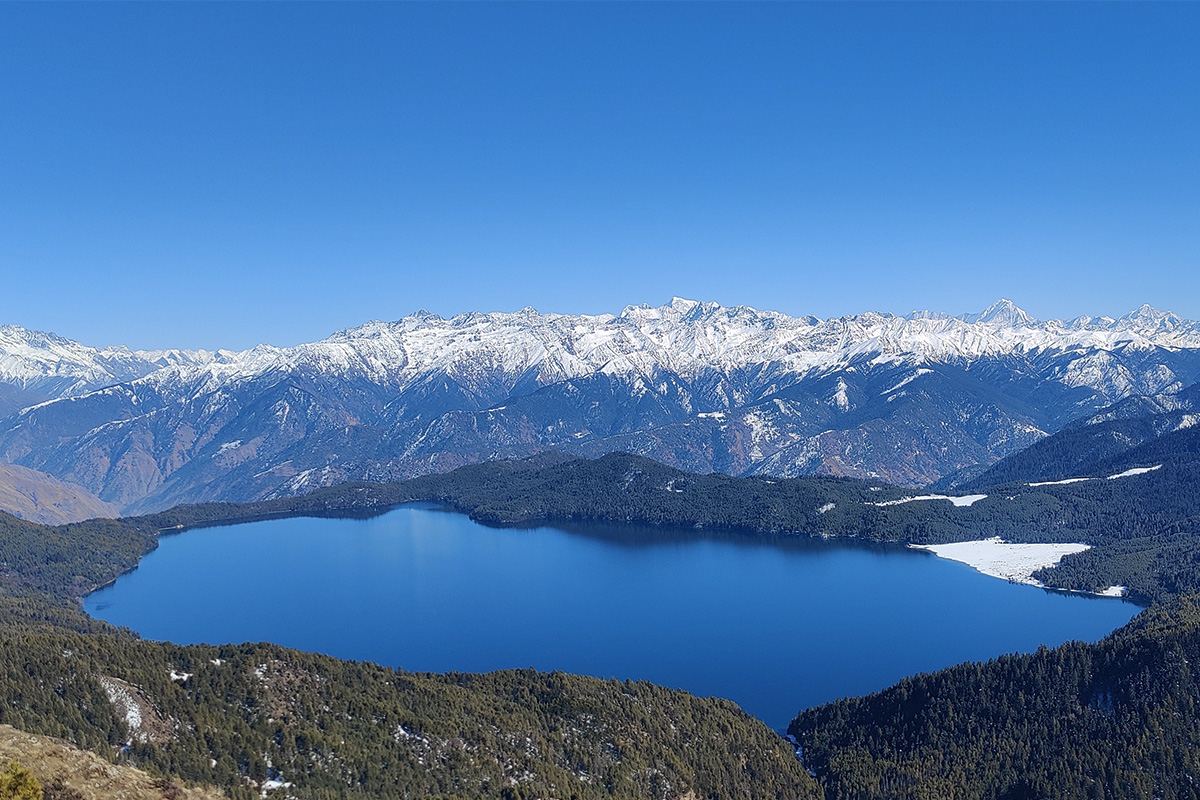
Rara Lake Trek is not only located in Rara National Park, but it is also located within Rara National Park, which is one of the most interesting national parks for observing animals. Blue pines, black junipers, maples, cypresses, and rhododendrons can be found throughout the diverse forests that make up the National Park. The Himalayan Black Bear, Musk Deer, Thar, Red Panda, and Leopards all called these forests their home. The Ghoral also called these woodlands home. There are over 200 different species of vibrant birds and butterflies that call these forests home as well.
Highlights of Rara Lake Trek
- The largest freshwater lake in Nepal- Rara.
- The Karnali River is the longest river in Nepal, and the Najir River Rara National Park is one of the finest parks in the world.
- One of the most isolated places to go trekking in all of Nepal.
- Danphe Langa Pass (3691 m) and Ghurchi Langa Pass are both stunning mountain passes that must be traversed (3480 m)
- An opportunity to gain insight into the ways of life led by those who make their homes in the secluded villages of western Nepal.
- Discover the wide variety of regional flora and animals that may be found in the area.
- During the same trip, observe the many distinct forms of climatic differences and Locally distinctive culture.
- Pass through the verdant pine and oak forests and other types of greenery.
- Enjoy the captivating sights of a variety of snow-covered mountains.
Phoksundo Lake Trek
The Shey Phoksundo Lake Trek is a quick and very simple journey to one of the largest and most breathtaking lakes in all of Nepal and is considered one of the best winter treks in Nepal. The journey begins in Kathmandu and takes seven days, although the time it takes depends on how many hours per day you walk. It could be longer or shorter than seven days. One of the most well-known and popular tourist spots in the Dolpo region is the lake known as Shey Phoksundo. Among the many stunning locations that can be found in Nepal, this territorial district holds the most importance. Explore the breathtaking landscapes and panorama of the himalayas of Dolpo in Nepal. This inaccessible region, which was popularized by Peter Matthiessen's book "The Snow Leopard," was not accessible to trekkers until the year 1989. The most alluring attraction in the area, Phoksundo Lake, is considered holy by members of the Bonpo faith as well as Buddhists. This hike is not particularly difficult and does not involve any high crossings; instead, it travels through the Himalayan forests and traditional Tibetan communities.
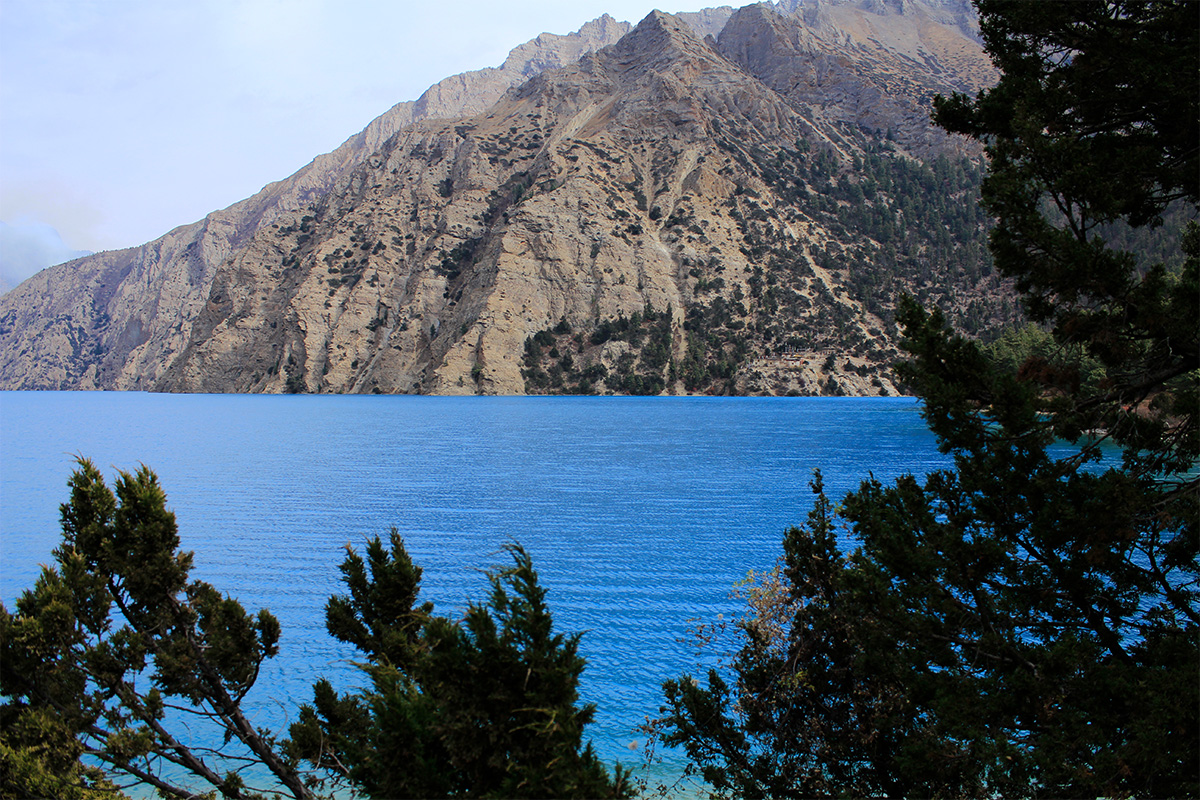
The winter season in Nepal is typically harsh, but conditions only degrade further as one climbs in elevation. Shey Phoksundo Lake is located at an elevation of 3,600 meters; therefore, the trek is not going to become difficult because it is not taking place at higher heights. Even though it will be chilly, it will still be possible to complete the Shey Phoksundo Lake Trek.
Highlights of Phoksundo Lake Trek
- Watch the Phoksundo Lake's stunningly gorgeous change in color throughout the day and be left breathless.
- Visit Tsowa Gompa, one of the few ancient monasteries of the Bonpo civilization that has survived to the present day.
- Enjoy the opportunity to view Blue Sheep, Musk Deer, and Tibetan Argali. Make your presence to see a snow leopard.
- Learn more about the Bonpo religion by visiting the holy lake of Phoksundo.
- Spend some time in the Tibetan community of Ringmo and get to know the local culture.
- Visit the breathtaking Jharna Waterfall for a truly unforgettable experience.
- Visit the Tshowa Gompa, a Bon monastery that dates back almost a thousand years.
Langtang Valley Trek
The Langtang Valley Trek is widely regarded as one of the most rewarding hiking adventures that can be had in the Langtang Region of Nepal. Because of this, the region is well-known for its biodiversity and serves as a habitat for a large number of endangered animal species, one of which is the heat-sensitive red panda. The total distance covered on foot during the journey is around 75 kilometers, which must be accomplished in a span of six days. The typical time spent walking in a day falls somewhere between 5 and 6 hours. The trek through the Langtang Valley is one of the most straightforward and accessible treks in Nepal. Although there are not as many trekkers along this route as there are in the Everest and Annapurna regions, it is just as stunning in terms of the natural and cultural landscapes. You can experience the magnificent culture and landscape of the Himalayas on this journey, which is one of the trekking trails that is one of the closest to the capital city of Kathmandu. The Langtang Valley Trek is one of the safest high-altitude hiking routes in Nepal during the winter because there is a low chance of avalanches or diseases caused by high altitude. This makes the Langtang Valley Trek one of the more popular winter treks in Nepal and also top 10 trekking places in Nepal.
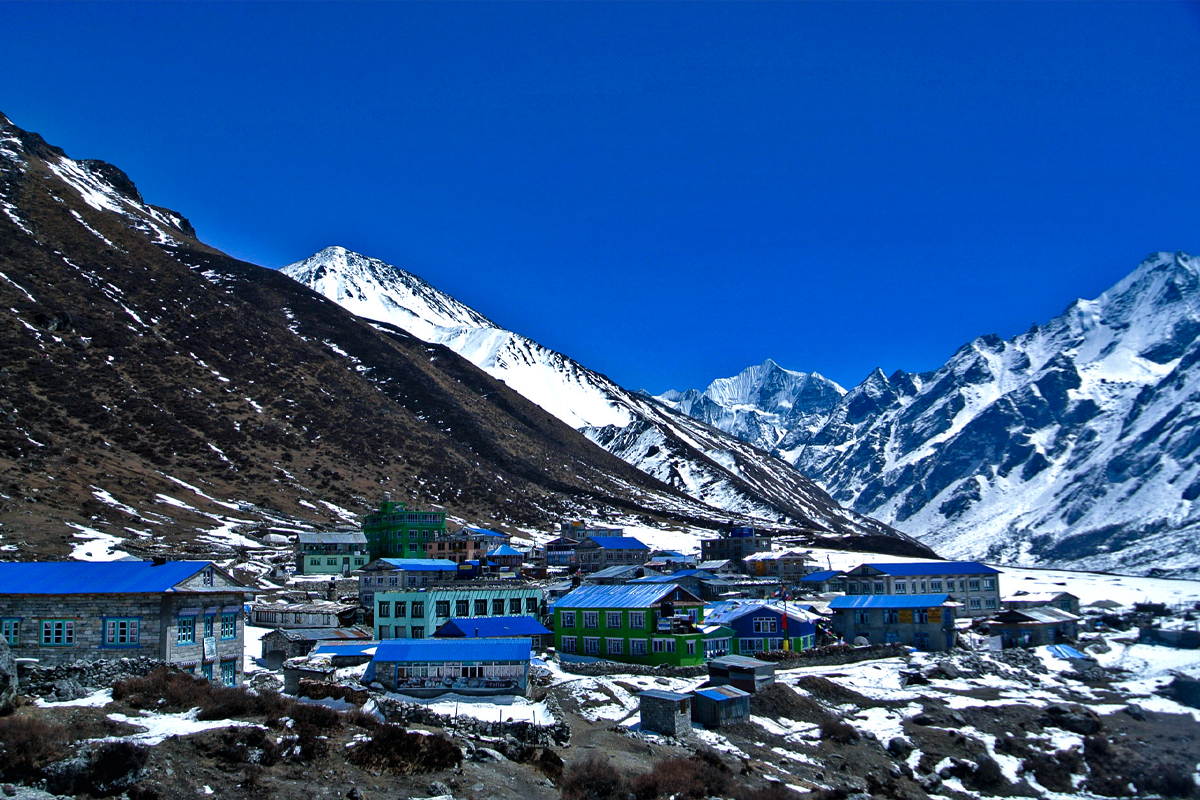
In the winter, the lowest temperatures at Kyanjin Gompa range from -2 degrees Celsius to -6 degrees Celsius, while the highest temperatures range from 5 degrees Celsius to 10 degrees Celsius. Even though snowfall occurs in the town on a lot of winter days, trek timetables are typically unaffected by the snowfall. This region carries so much potential for winter treks in Nepal.
Highlights of Langtang Valley Trek
- An exciting and beautiful drive to Syabrubesi, Rasuwa
- Trekking in the Langtang region includes traveling through a valley formed by glaciers.
- Learn about the Tamang and Sherpa cultures, customs, and traditions of the area.
- Breathtaking panoramas of mountains, valleys, forests, and glaciers, as well as rivers.
- Several endangered species call it home, including the Black Bear, Snow Leopard, Red Panda, and Himalayan Monal.
- Experience the monasteries, stupas, and Buddhist correspondence in the historic Kyanjin Gompa settlement.
- Popular viewpoint Tserko Ri offers sweeping views of mountains, valleys, and glaciers.
Annapurna Base Camp Trek
The Annapurna Base Camp Trek, often referred to as the Annapurna Sanctuary Trek, is a relatively short trek that takes travelers across a variety of landscapes and is deemed as one of the best winter treks in Nepal. The Himalayas, hill tribes, and other distinctive landscapes are all found there. Annapurna Base Camp demands moderate fitness. At an elevation of around 5500 meters, you will be required to walk for up to 7 hours, 6-7 hours per day, on terrain that is challenging. Hikers who are unfit or untrained may find it challenging to hike at this altitude because of the thin air.
The Annapurna region experiences a somewhat dry climate during the winter. It rarely gets more than 25 millimeters of rainfall. The amount of moisture in the air is controlled by both the high elevation and the low temperature. If you are trekking to the Annapurna Base Camp in the month of December, the weather is going to be relatively consistent. Nevertheless, the weather in the Himalayas can turn quickly at any moment. Therefore, you should prepare yourself to meet any problems that the weather throws at you. Trekking in Nepal in December marks the beginning of winter as the calendar advances one month forward. The weather at the beginning of December is transitional between fall and winter. The temperature begins to drop by a significant amount as the days progress. As you climb to higher elevations, the temperature will begin to drop below 0 degrees. The base camp has an average temperature that is five degrees below zero all year long. There is a chance that some days in December will be cloudy, which will conceal the scenery. However, the viewpoints are frequently more distinct. The views of the snow-covered, breathtaking peaks are made much more breathtaking when the weather is dry and clear.
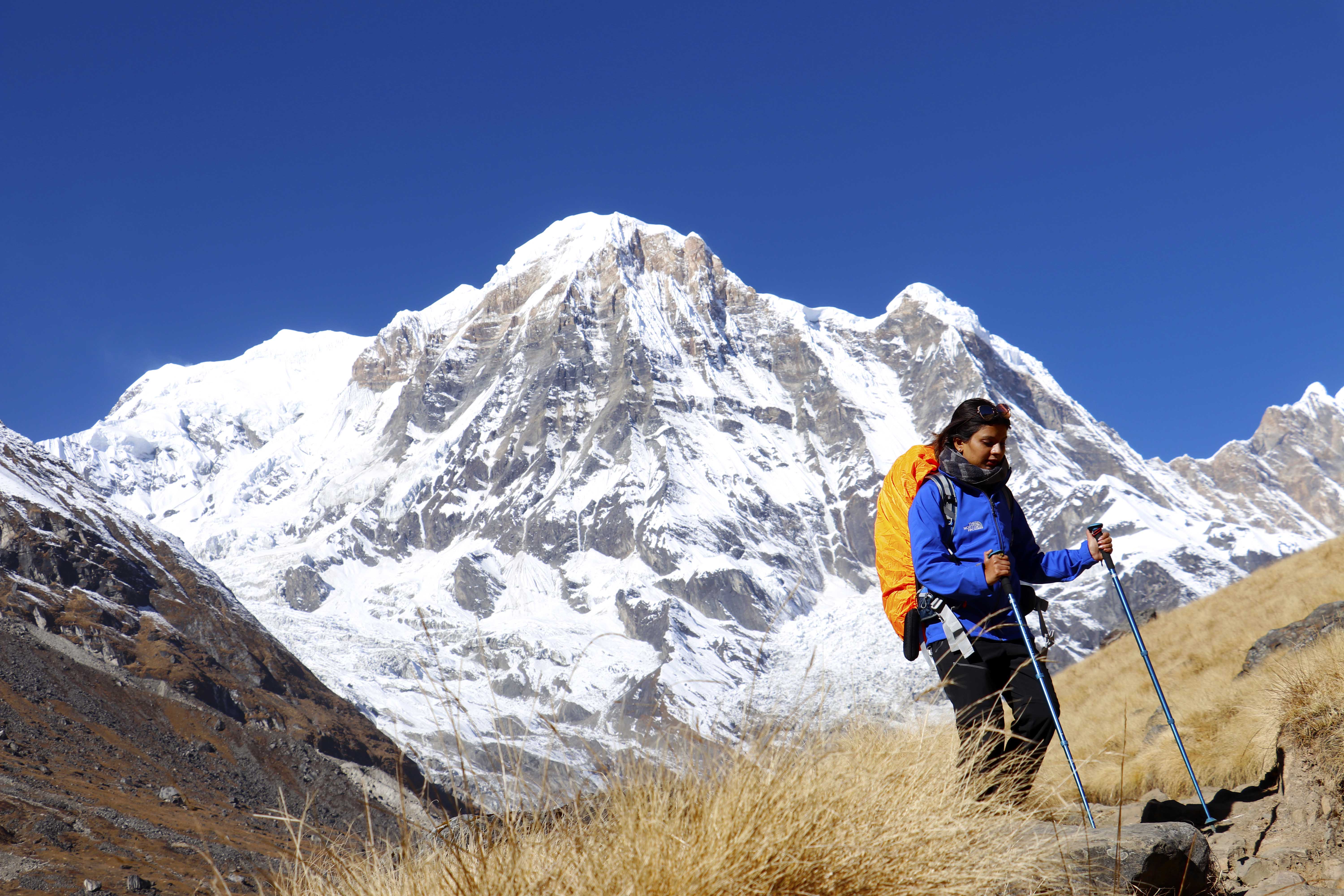
The coldest temperature throughout the winter months at Annapurna Base Camp is between -4 degrees Celsius and -10 degrees Celsius, while the maximum temperature stays between 5 degrees Celsius and 10 degrees Celsius. There are several winter days when the Base Camp is covered in snow, although this does not, for the most part, make the journey more difficult.
Highlights of Annapurna Base Camp Trek
- A lush green forest, an alpine forest, and a rich biodiversity may all be found in the greatest conservation area.
- Spending the day hiking through the Manang valley's yak pastures, grazing meadows, and farmlands.
- Stunning natural waterfalls, glacial lakes, and rivers, as well as deep Georges.
- Spectacular panoramas of some of the world's most breathtaking snow-covered mountains, including the Annapurna range, Thorong Peak, Manaslu, Gorkha Himal, Lamjung Himal, Dhaulagiri, Tukuche Peak, Nilgiri, and Machapuchhre, to name just a few.
- Discover the religious significance of this ancient sacred temple, which is revered by both the Hindu and Buddhist communities.
- Discover Poonhill's most well-known viewpoint for watching the sunrise.
- Experience Pokhara's opulent, cutting-edge luxury accommodations.
Jomsom-Muktinath Trek
The Jomsom-Muktinath Trek is a remarkable trekking adventure that takes place in the hot and dry desert of the Annapurna region. Jomsom Muktinath is located in a region that is sheltered from rainfall due to the presence of the massive Dhaulagiri mountain range. As a direct result of this, the amount of rain that falls here is lower. Along the same routes, it is necessary to travel through a select few noteworthy locations in the Annapurna region. The Kali Gandaki gorge is going to be one of the more interesting locations that you will go through on this trip. At the same time, when winter comes, the location transforms into a setting straight out of a dream.
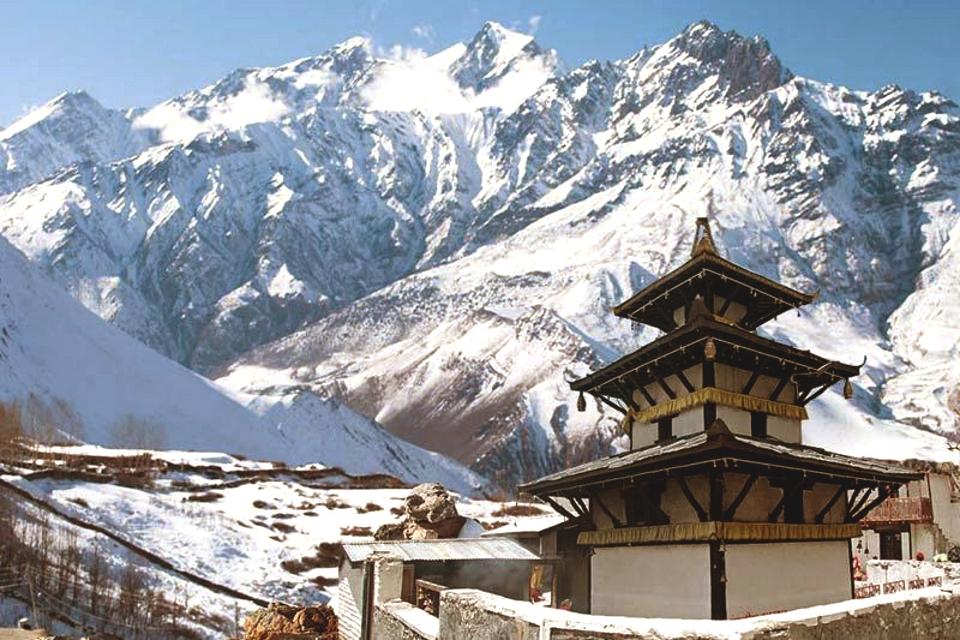
These settlements are surrounded by mountains that are more distinct than they have ever been, and the entire desolate landscape will be blanketed in snow along with the perfect nepalese hospitality. In addition, pilgrims of both Hinduism and Buddhism will have the opportunity to visit the holy site of Muktinath, which is considered to be one of the most important religious sites in the world. Therefore, hikers will come across distant villages that adhere to Buddhist and Hindu religious traditions. In general, it is a rather easy hike, and it is an excellent choice for a trekking location during the winter months.
Highlights of Jomsom-Muktinath Trek
- The journey from Kathmandu to Pokhara was filled with breathtaking views.
- Fly over breathtaking scenery from Pokhara to Jomsom.
- The Kali Gandaki River- the deepest gorge in the world.
- The Temple of Muktinath, a popular destination for pilgrims, is located 3,800 meters above sea level.
- A chance to relax at natural hot springs can be found in Tatopani.
- Mountain sunrise as seen from PoonHill View Point
Trekking in the winter is actually exciting, while being physically challenging, whether you choose a winter trip along Nepal's most famous trekking trail or a series of breathtaking day treks in the country. However, the unique experience of admiring the magnificence of the scene with its blanket of snow and frozen lakes is a reward in and of itself. These are a few of our specially selected best winter treks in Nepal that will give you a fulfilling winter trek experience. For further information, feel free to contact us.












